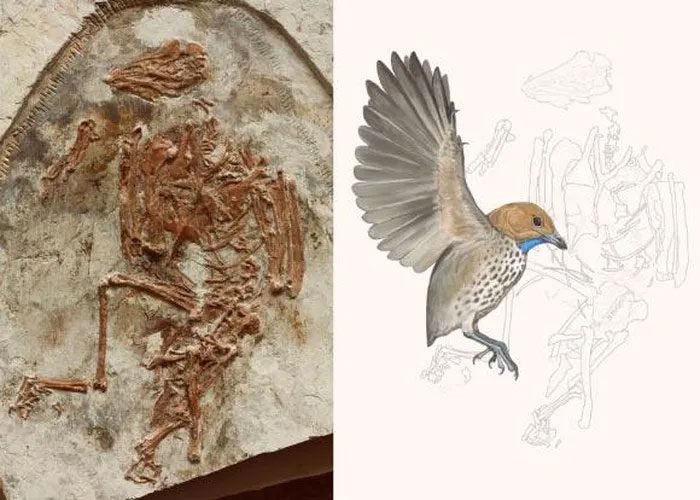A previously unknown creature from the Cretaceous period has revealed a significant evolutionary step of the species dubbed the “living descendant of dinosaurs.”
Excavated in Shandong Province, China, the intact body of a completely new species, named Imparavis attenboroughi, showcases the unfinished transformation of a creature that has just emerged from the form of a dinosaur.
Birds, which evolved from dinosaur-like creatures, are thus considered the only living descendants of dinosaurs.

Imparavis attenboroughi represents birds that have just emerged from the form of dinosaurs, still retaining some reptilian traits – (Photo: CRETACEOUS RESEARCH).
According to Sci-News, the Imparavis attenboroughi is 120 million years old and belongs to a group of ancient birds called Enantiornithes, characterized by shoulder joint features that differ from modern birds.
Together with dinosaurs, pterosaurs, and other prehistoric creatures, these birds, which bear traces of this incomplete evolution, became extinct during the Chicxulub asteroid disaster 66 million years ago.
However, they have left the world intriguing fossils, promising to shed light on historical transformations and how birds navigated ecological niches during the harsh conditions of the mass extinction period to survive.
The transition to birds must have included the loss of teeth and dinosaur-like claws. Most Enantiornithes possessed these features.
“If you could go back 120 million years in Northeast China, you might see something resembling a red or pink flamingo, but then it would open its tooth-filled mouth, spread its wings, and reveal its fingers,” said Dr. Alex Clark from the Field Museum (USA), a co-author of the study.
However, Imparavis attenboroughi is the first known Enantiornithes discovered without teeth and is also the oldest known toothless bird.
This discovery pushes back the evolutionary timeline for toothless beaks to 120 million years, which is 48-50 million years earlier than previously thought.
Another interesting feature that led Dr. Clark and his colleagues to recognize the bird they found as a new species is a bony protrusion at the ends of its wings, where muscles attach to help it flap its wings more powerfully.
Unlike other birds in the same family, which primarily live in trees, this species, with its excellent flying ability, also ventured to forage on the ground, facilitating the development of toothless beaks.
These new data suggest that the evolutionary history of birds is more complex than we previously thought.
And this is not just the evolutionary story of a single species but also contributes to explaining how many groups of Earth’s organisms evolved to survive mass extinctions, including the ancestors of our mammals.
The research was recently published in the scientific journal Cretaceous Research.


















































